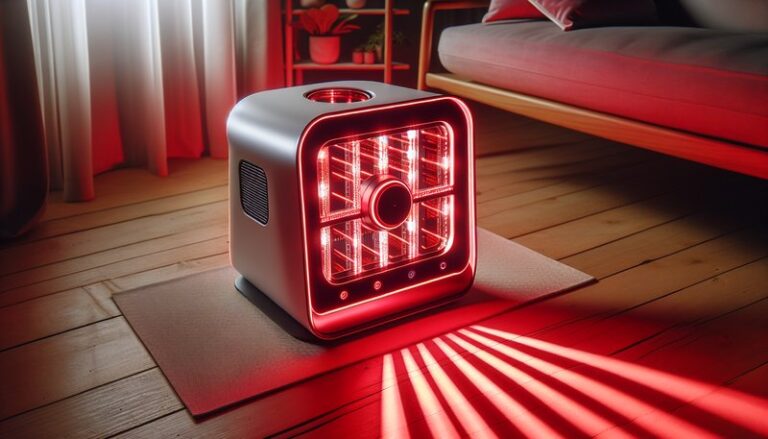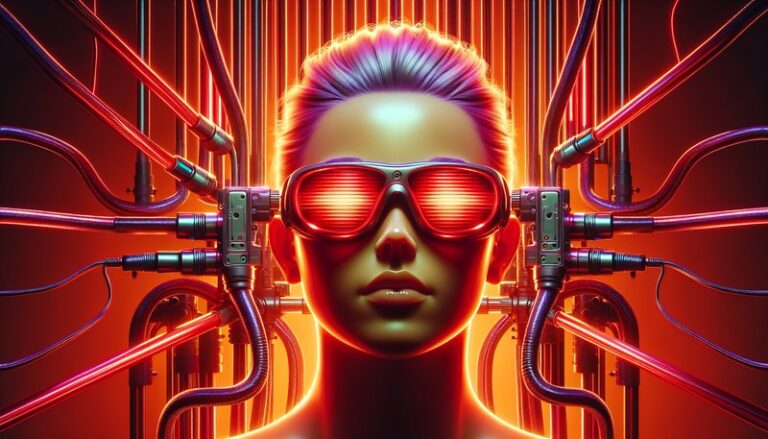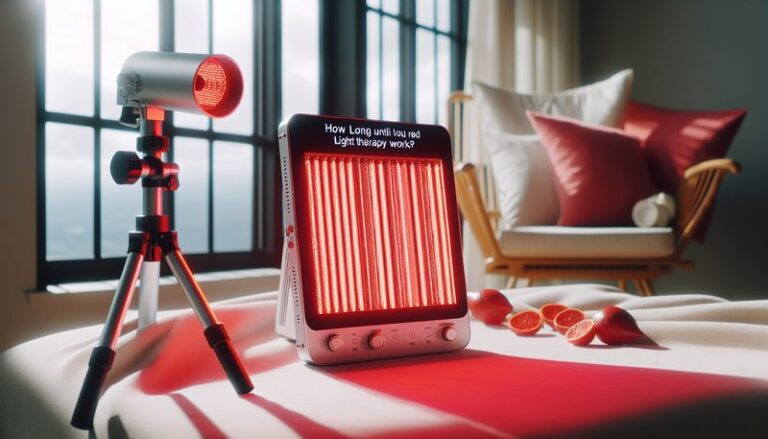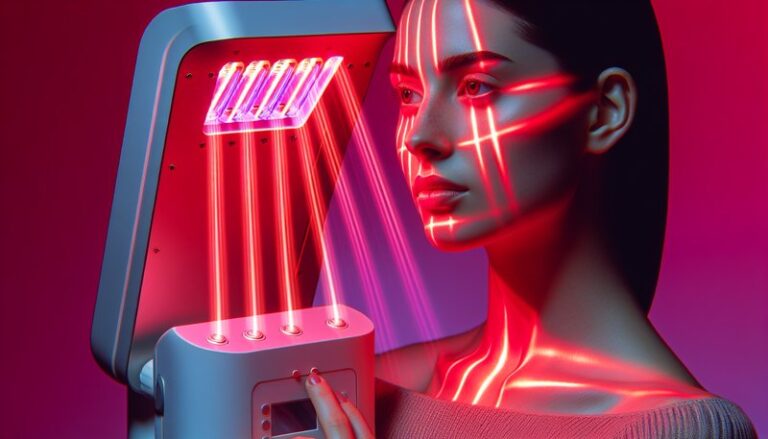Does Red Light Therapy Help Stretch Marks?
Are you struggling with stretch marks and looking for effective treatment options?
In recent years, red light therapy has gained popularity as a potential solution for various skin concerns, including the appearance of stretch marks. This article will explore whether red light therapy can help fade stretch marks, examine its benefits, consider potential alternatives, and answer common questions surrounding this innovative treatment.
Key Takeaways
- Red light therapy uses specific wavelengths of light to promote skin healing and rejuvenation.
- Many users have reported improvements in the appearance of their stretch marks after undergoing red light therapy.
- While generally considered safe, individual results can vary, and it’s essential to consult with a healthcare professional before starting treatment.
What is Red Light Therapy?
Red light therapy (RLT), also known as low-level laser therapy (LLLT) or photobiomodulation, involves exposing the skin to low levels of red or near-infrared light. This non-invasive treatment is thought to stimulate cellular activity, promote healing, and reduce inflammation.
The therapy works by enhancing the mitochondria—the powerhouse of cells—thereby increasing energy production within the skin cells. This process can lead to improved collagen production, reducing the visibility of scars, including stretch marks.
What are the Benefits of Red Light Therapy?
Using red light therapy for stretch marks presents several potential advantages. The following sections will delve into these benefits.
Collagen Production Boost
Red light therapy can stimulate collagen production, which is crucial for skin elasticity and repair. Stretch marks occur when the skin is stretched rapidly, leading to the tearing of collagen fibers. By increasing collagen synthesis, RLT may help improve the skin’s overall texture and elasticity.
Improved Skin Healing
The light from RLT penetrates deep into the skin, promoting healing processes at the cellular level. Many users report a reduction in the redness and depth of their stretch marks after regular treatments, as the skin’s natural repair mechanisms are awakened.
Non-Invasiveness and Safety
Red light therapy is non-invasive and generally considered safe for most skin types. Unlike certain chemical treatments or surgeries that may involve risk, RLT carries minimal side effects. This makes it an appealing option for those seeking a gentle solution to stretch marks.
Convenience of At-Home Devices
With the emergence of at-home red light therapy devices, individuals can now incorporate treatment into their skincare routines conveniently. This accessibility allows for greater consistency in treatment, which could enhance results over time.
Is it Possible to Eliminate Stretch Marks with Red Light Therapy?
While many users of red light therapy have reported improvements in their stretch marks, it’s essential to consider the feasibility of completely eliminating them. Stretch marks can be challenging to treat entirely due to their nature as scars.
What are the Advantages of Using RLT?
RLT offers several advantages for treating stretch marks, including:
Read the extensive guide Is Red Light Therapy Safe for Dark Skin?
- Accessibility: Home devices make RLT easier to incorporate into daily routines without the need for frequent professional visits.
- Quick Sessions: RLT sessions are typically brief, making them easy to fit into busy schedules.
- Pain-Free Experience: Unlike some other treatments that may cause discomfort or reactions, RLT is usually painless.
What are the Disadvantages of Using RLT?
Despite its benefits, there are some disadvantages associated with red light therapy:
- Variable Results: Individual responses to RLT can differ, and some may not experience significant improvement in their stretch marks.
- Regular Maintenance Required: For ongoing effectiveness, regular sessions may be necessary, which could become time-consuming and costly.
- Initial Cost: Depending on the chosen method (professional or at-home devices), initial out-of-pocket costs can be high.
What are the Things to Consider Before Starting RLT for Stretch Marks?
Before deciding to pursue red light therapy for stretch marks, consider the following factors:
Consultation with a Professional
It’s wise to consult a dermatologist or healthcare provider to assess your specific condition and discuss the suitability of red light therapy in your case.
Skin Type and Sensitivity
Different skin types may respond differently to RLT. Understanding your skin type and any potential sensitivities will help in selecting the right treatment approach.
Expectations and Commitment
Have realistic expectations about the results of RLT. Stretch marks may fade but are not guaranteed to disappear entirely. Additionally, consider whether you can commit to the required treatment regimen.
Device Quality and Certification
If opting for at-home devices, ensure they are of high quality and FDA-approved to maximize safety and efficacy.
Explore Red Light Therapy for Dogs
What are the Alternatives to Red Light Therapy?
Several other treatment options exist for those looking to reduce the appearance of stretch marks:
Topical Treatments
Creams and lotions specifically designed to improve the appearance of stretch marks can be applied directly to the skin. Ingredients like retinoids and hyaluronic acid are often highlighted for their potential benefits.
Laser Treatments
Fractional laser therapy can also help improve the appearance of stretch marks by promoting collagen production and skin resurfacing. This treatment is typically performed by trained professionals.
Microdermabrasion
This non-invasive procedure exfoliates the skin’s surface, potentially improving the appearance of stretch marks over time. It is another option for those looking to enhance skin texture and tone.
Conclusion: Is it Recommended to Use Red Light Therapy for Stretch Marks?
Red light therapy shows promise as a beneficial treatment for reducing the appearance of stretch marks due to its ability to stimulate collagen production and promote healing. While individual results may vary, many find it a safe and non-invasive option worth considering. Consulting with a healthcare professional can help determine the best approach based on personal needs and stretch mark characteristics.
Frequently Asked Questions
Can red light therapy completely eliminate stretch marks?
While red light therapy can significantly improve the appearance of stretch marks, it may not completely eliminate them. Results vary among individuals.
How long does it take to see results from red light therapy?
Results can vary, but many users begin to notice improvements after several weeks of consistent treatment, though it may take longer for full results to manifest.
Is red light therapy safe for all skin types?
Red light therapy is generally safe for all skin types, but it’s advisable to consult with a healthcare provider if you have specific skin concerns or conditions.
How often should I undergo red light therapy for stretch marks?
Most recommendations suggest 2-3 sessions per week for optimal results, but individual plans may vary based on personal needs and device specifications.
Are there any side effects associated with red light therapy?
Side effects are minimal and may include mild redness or irritation, but these typically subside quickly. Always consult with a professional if you experience unusual reactions.






